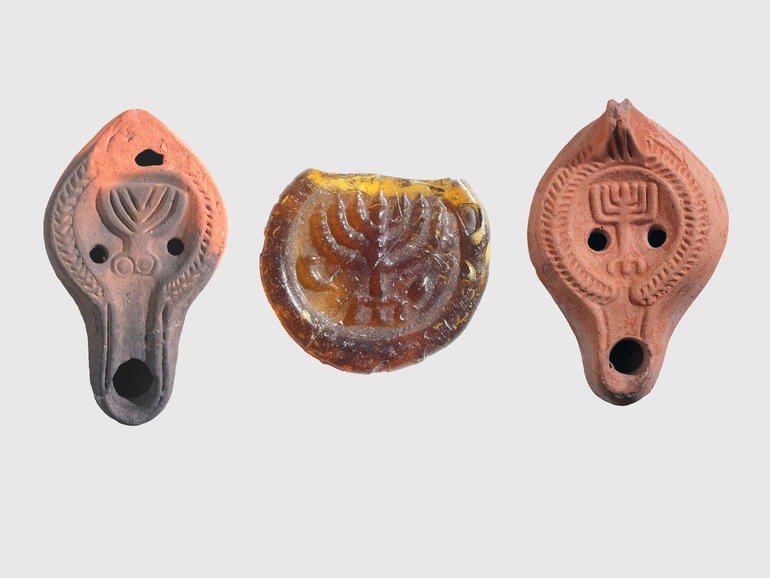
Then and Now
Jewish presence in the Croatian region of Dalmatia can be traced back to Roman times when, after the Second Temple of Jerusalem was destroyed in 70 CE, most of the Jews from Palestine were dispersed throughout the Roman Empire. With this diaspora, increasing numbers of Jewish merchants became involved in international trade and many settled in the Adriatic coast, possibly as early as the second century.
In ancient Salona, then the capital of the Roman province of Dalmatia, many liturgical objects have been found, including oil laps depicting a menorah and other objects with Jewish symbols and inscriptions. Some are now kept at the Archaeological Museum in Split.
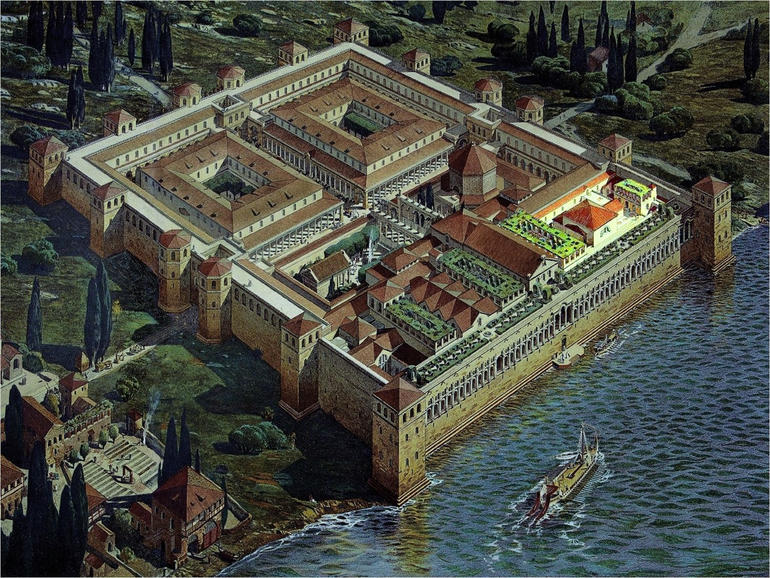
Diocletian's Palace
In the modern-day city of Split, Diocletian’s Palace is the heart of the city’s historic center. The vast palace complex was built between the late third and early fourth centuries, as a retirement residence for Roman Emperor Diocletian, and stood alone until the seventh century when refugees fleeing the destruction of nearby Salona, transformed it into a town. As the years went by and it fell into ruin, medieval buildings enveloped Diocletian’s Palace. Yet sections of the palace remain intact.
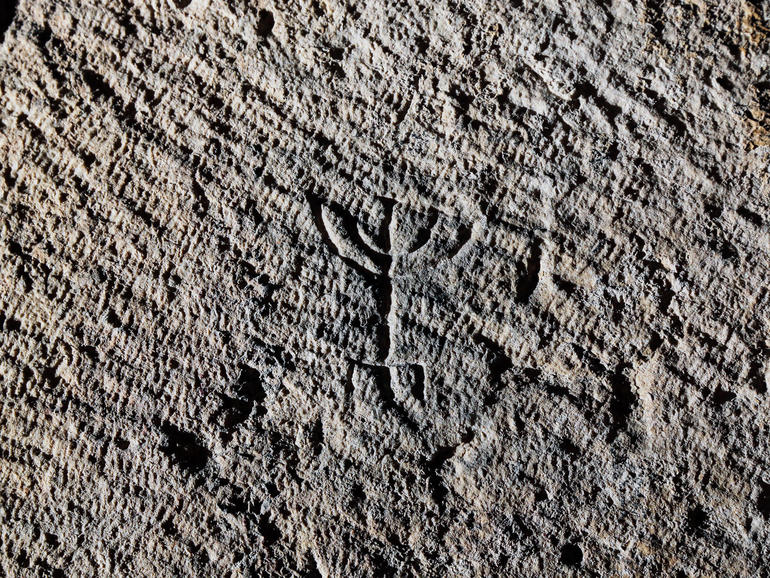
Recent investigations suggest there was a sizeable Jewish community in Diocletian’s Palace, perhaps from the time of its construction. Interesting stone-carved signs can be found in many places in the palace. Most are readily recognizable as masons’ marks, but research suggest some may have been incised for symbolic reasons. Prominent among them are marks of the menorah, one of the oldest symbols of Judaism. All signs are located in the eastern part of the substructures of the imperial residence, in the vicinity of the dining room. The placement of Jewish symbols in such prominent locations suggests these spaces belonged to the Jewish community, and are likely to indicate a synagogue.
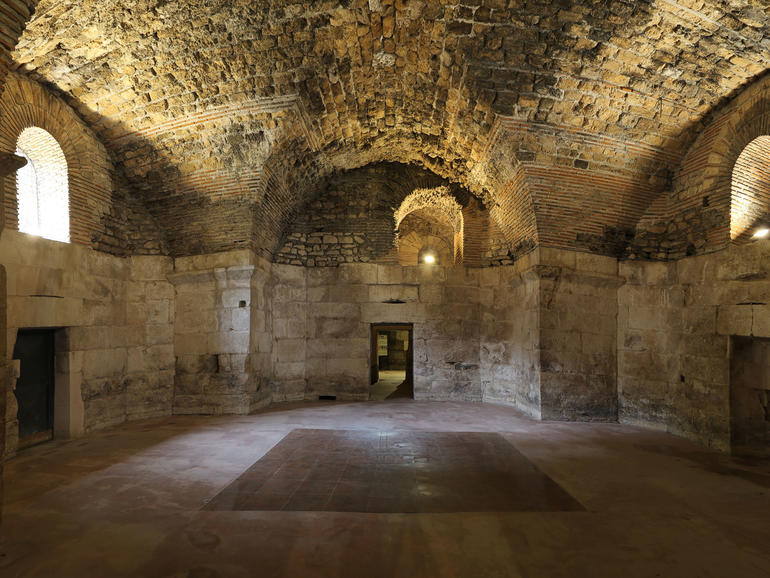
A synagogue within the palace
Several medieval writings mention a synagogue within Diocletian’s Palace, including a list of the possessions of the archbishopric of Split in 1397. Within this list, the synagogue’s location is described alongside the vaulted space underneath the house of ‘the late Radovan,’ in the eastern substructures of Diocletian’s Palace. Here, the synagogue and the oldest Jewish neighborhood would have been in constant use from Antiquity to the Middle Ages.
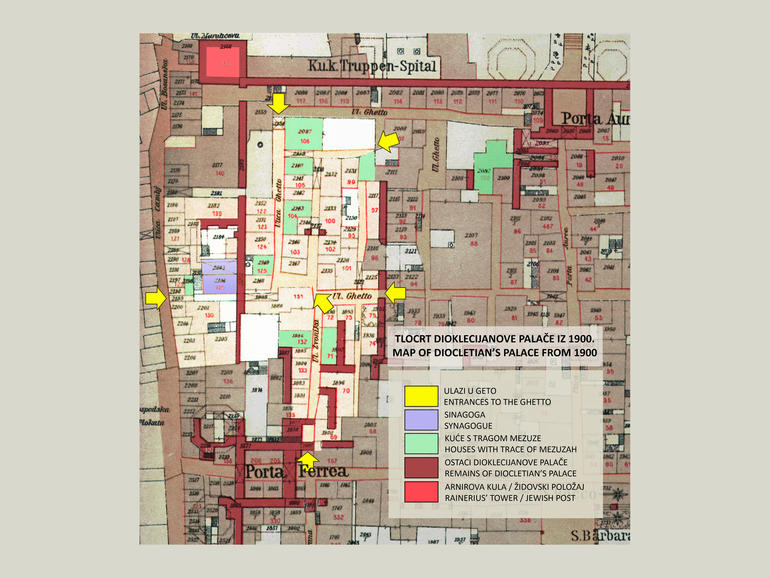
A new period for Split Jews
A fire in 1506 devastated the southeastern part of the city, including the archbishop’s palace, forcing the Romaniote community (descendants of the Roman-era Jews) to leave their settlement in the substructures of the former imperial residence.
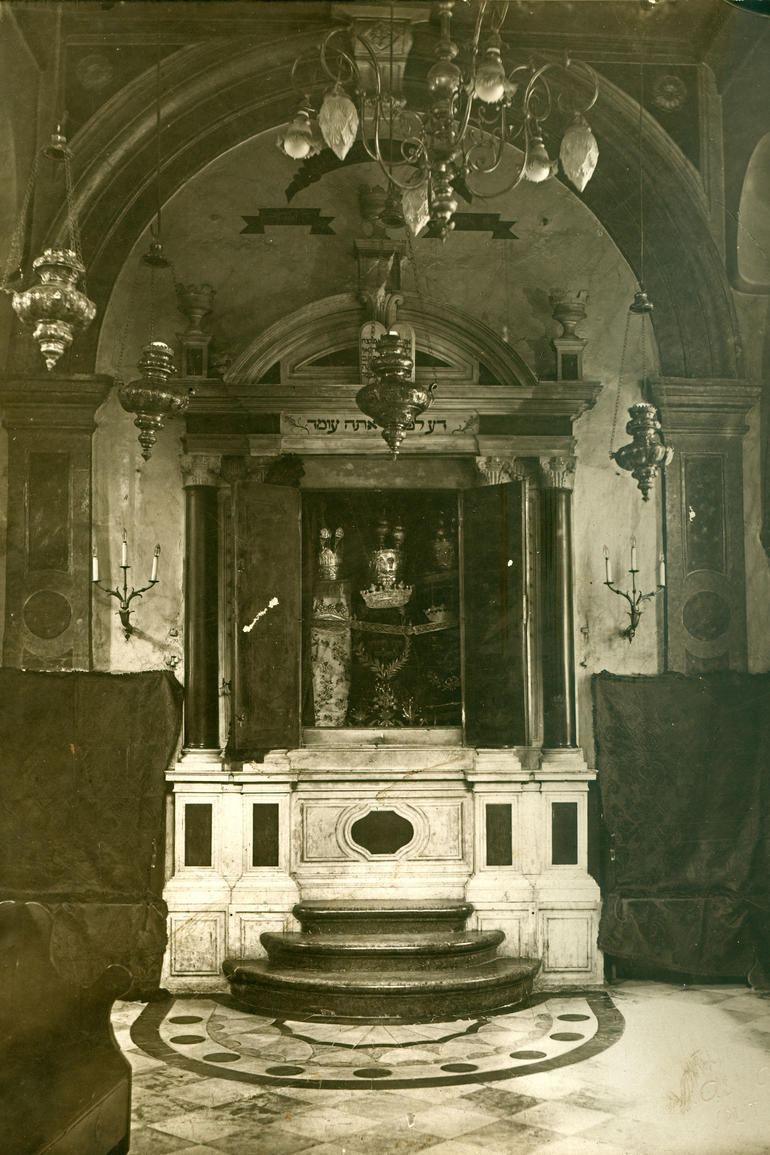
The new synagogue
The Romaniote community founded a new Jewish neighborhood nearby and repurposed a medieval building adjoining the west wall of Diocletian’s Palace as their synagogue. In the original arrangement, the Aron Kodesh was located along the eastern wall, opposite the Bima or Teva, with benches positioned along the central axis, facing each other. The Bima was later moved in front of the ark, but the unique positioning of the benches remained.
In 1728, the cramped synagogue was enlarged by opening wide arches in the wall, where an enclosed space for women was arranged. In the nineteenth century, the synagogue acquired a gallery with a separate entrance.
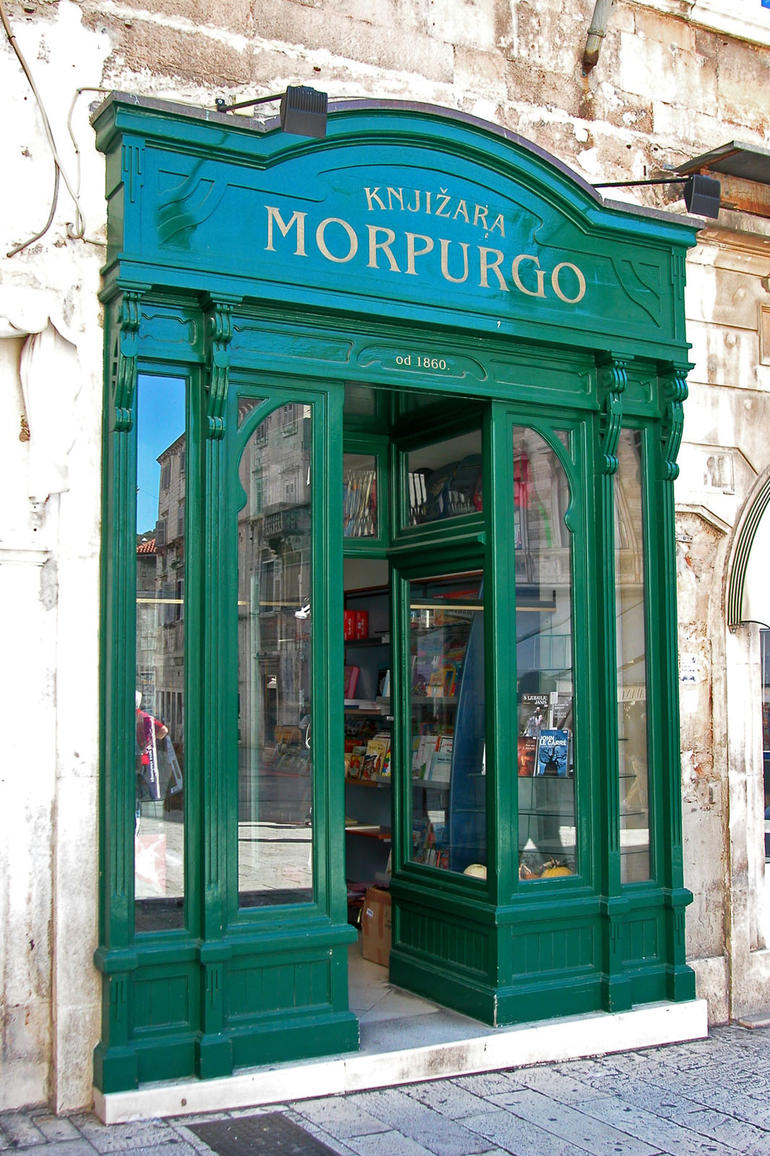
Jewish Communities in Split
The Jewish community grew substantially in the late fifteenth and early sixteenth centuries as waves of Sephardic Jewish refugees fled Portugal, Spain, and Italy during the Inquisition and settled in Dalmatia. They quickly outnumbered the Romaniotes, and the traditions and customs that were authentic to Romaniote Jews were quickly abandoned as new influences and traditions were embraced. From the mid-eighteenth century, Ashkenazi Jews from central and Eastern Europe began settling in Split.
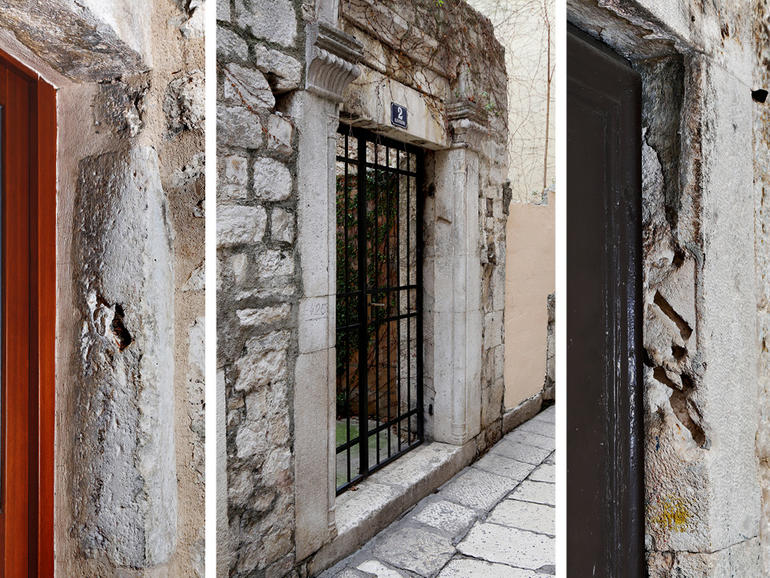
The Ghetto
Jews in Split lived predominately in the area northwest of Diocletian’s Palace, a neighborhood that Split residents continue to call Get (Ghetto). Unlike most European cities, where Jews were forced to live in an isolated quarter, the Ghetto in Split was open, except for a short period at the end of the eighteenth century. Many Jews also lived in other areas of the city.
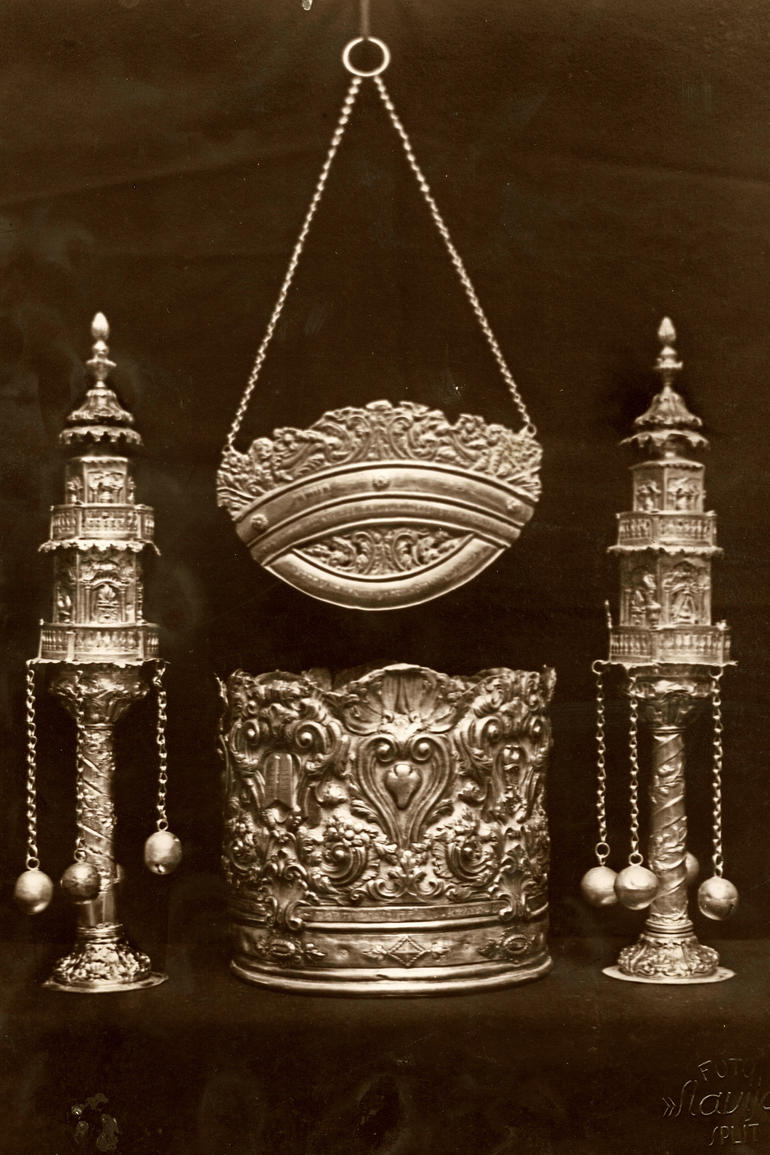
World War II
In 1942, the interior of the synagogue was looted and severely damaged. Invaluable relics, books, and manuscripts were burned in the nearby Piazza dei Signori, present-day National Square. Luckily, the people of Split managed to save several silver objects from the ashes, which were returned to the Jewish community after the war, along with objects that had earlier been hidden in the Ethnographic Museum.
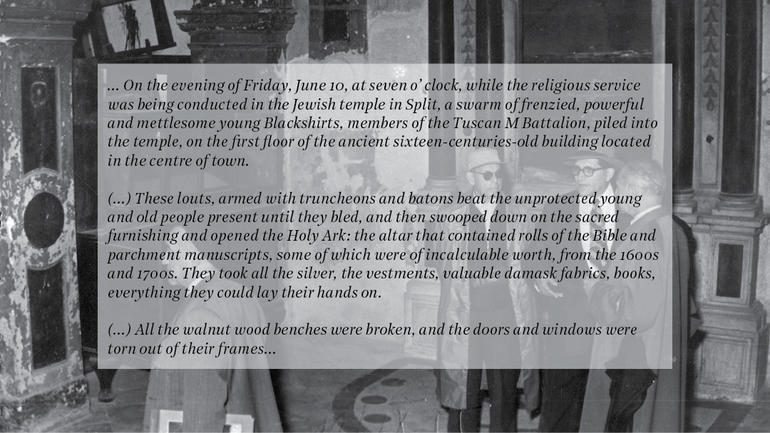
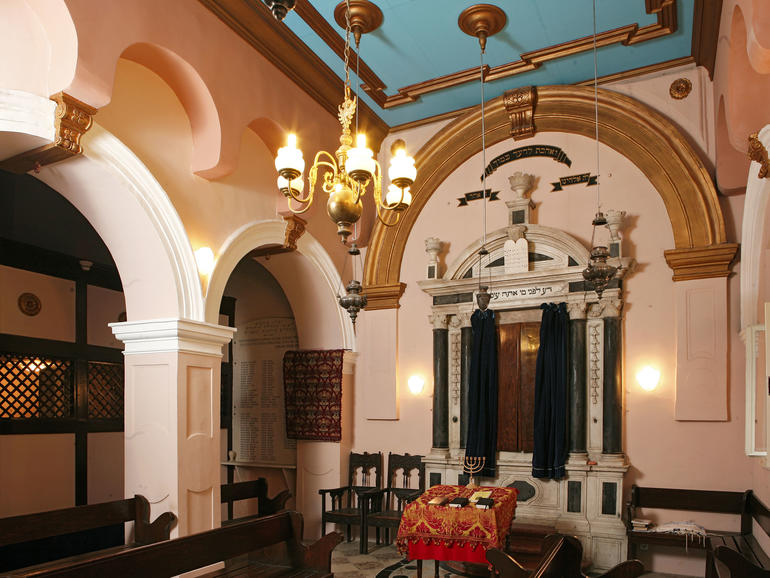
Restoring the synagogue
Split synagogue has undergone several restoration campaigns since World War II, the most recent in 2014, when World Monuments Fund helped restore the exterior façade. Previous work included:
1968 – An extensive restoration campaign was carried out following completion of priority conservation works to restore functionality to the sanctuary after the devastation of WWII.
1996 – Restoration of the synagogue’s floor and timber roof were carried out after a portion of the ceiling collapsed in 1993. Electrical systems were also updated.
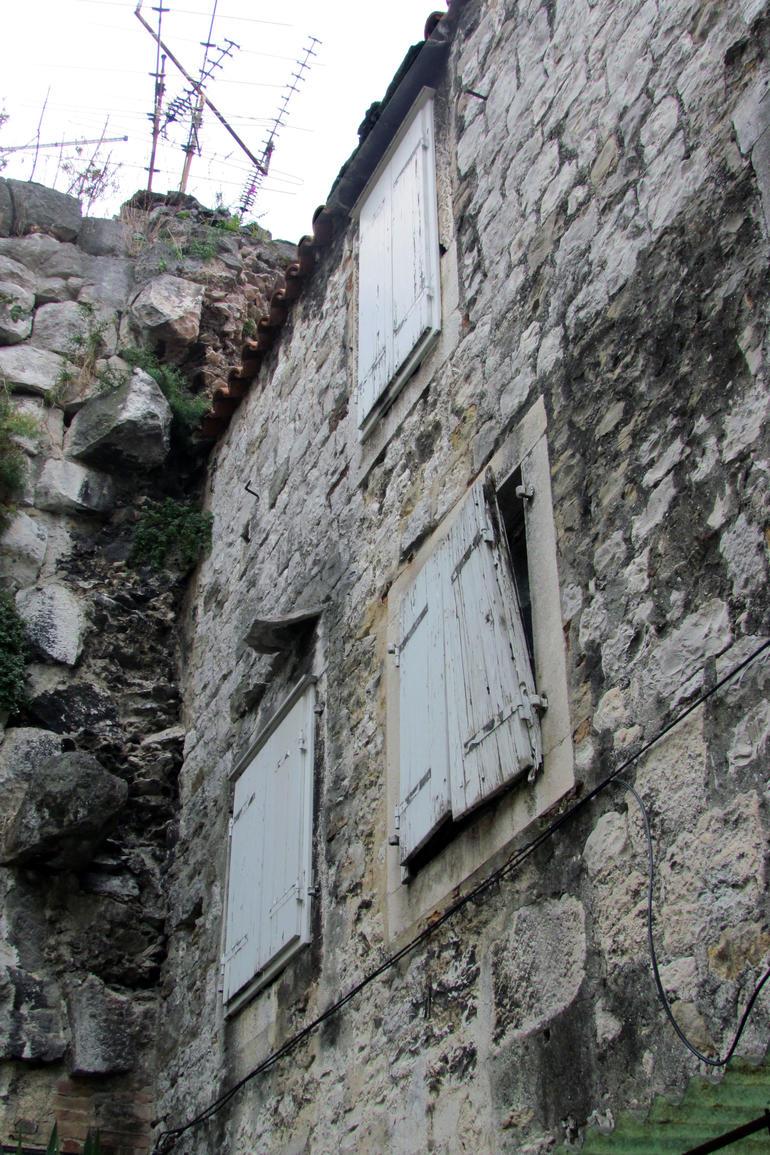
In 2014, a project supported by World Monuments Fund’s Jewish Heritage Program, through the generous support of the David Berg Foundation and the Cahnman Foundation, addressed the exterior of the synagogue. An extraordinary effort was made to treat and prevent future water penetration through the connection of the roofs of the synagogue and surrounding houses.
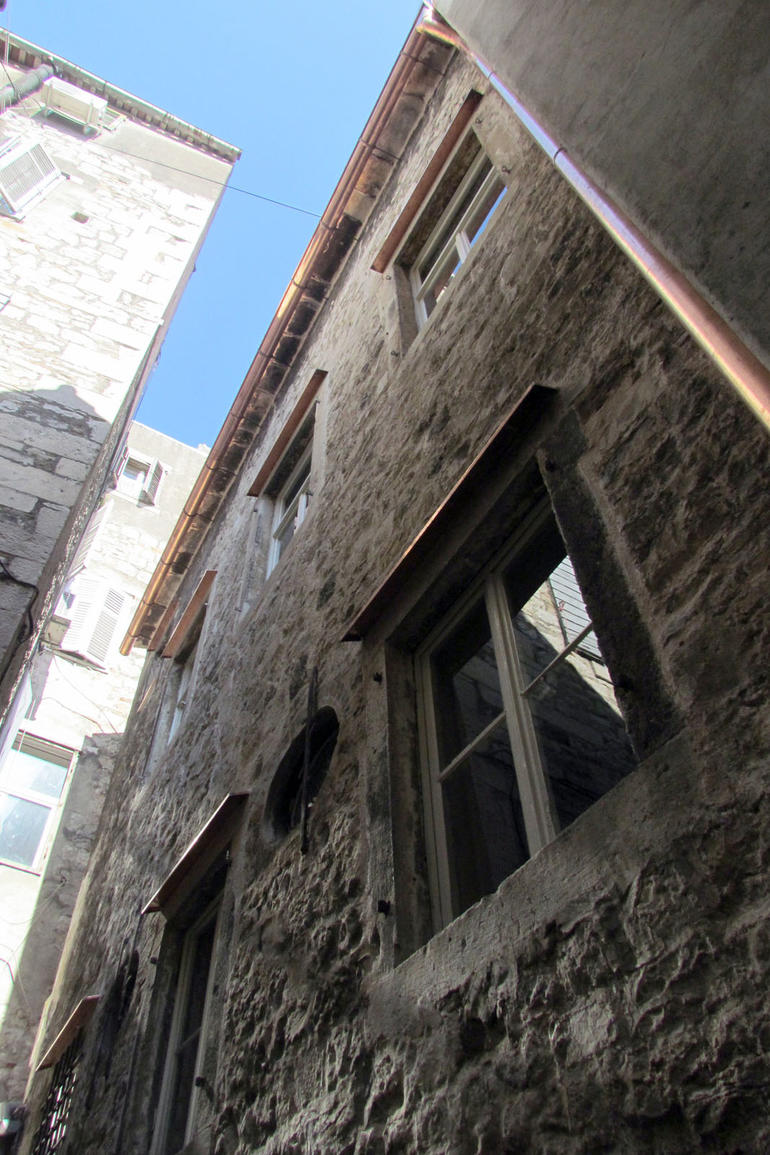
The façades were cleaned, and decayed mortar from the joints was replaced with high quality lime mortar. Damaged parts of the walls were restored using traditional techniques, and the wooden shutters and windows were replaced.
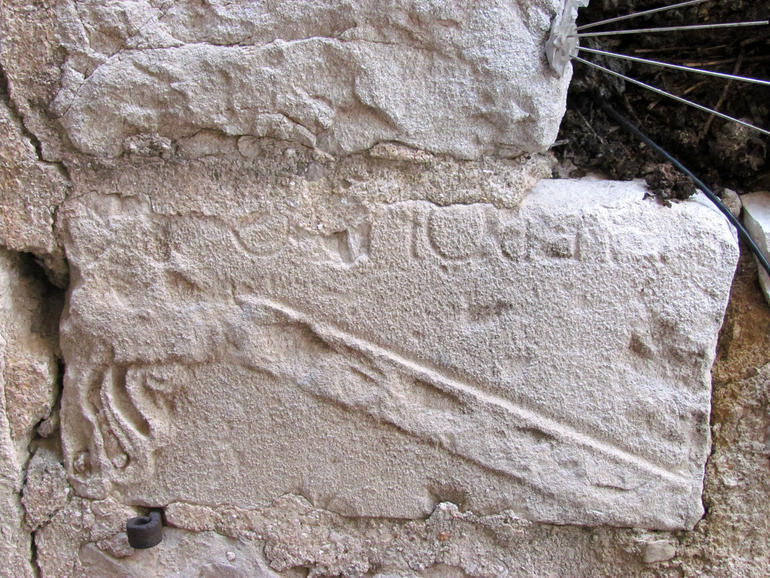
During the project, a fragment of a Roman stone slab was uncovered, with part of its inscription still remaining, as well as fragments of marble door jambs of an early medieval building that were reused as window jambs on the synagogue’s north façade.
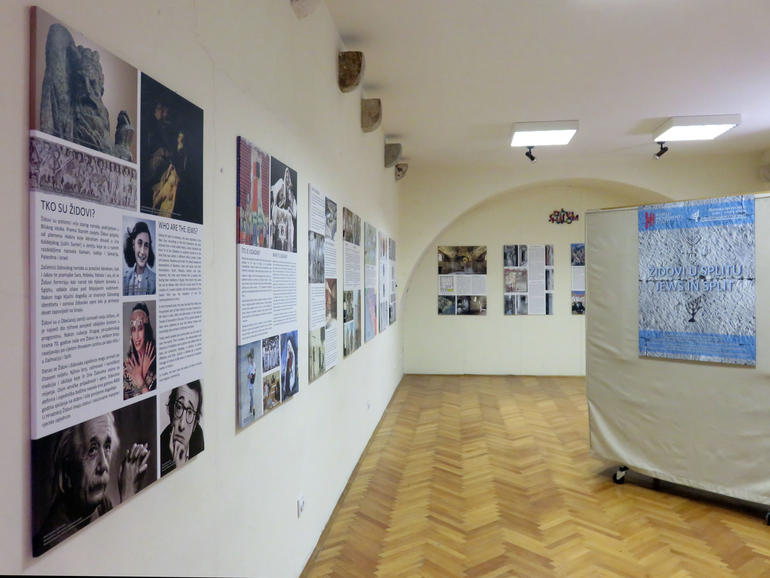
Jews in Split – an exhibition
After the restoration, we supported our local partners in the interpretation of the history of the Split synagogue and the Jewish community it has served over the centuries. The exhibition, Jews in Split, is presented in English and Croatian at the Jewish Community Center in Split, located at the entrance to the synagogue. For the thousands of people who visit the synagogue each year, it serves as an introduction to the history of Jewish presence in Split. The exhibition will eventually need to be incorporated as part of a more substantial Jewish museum.
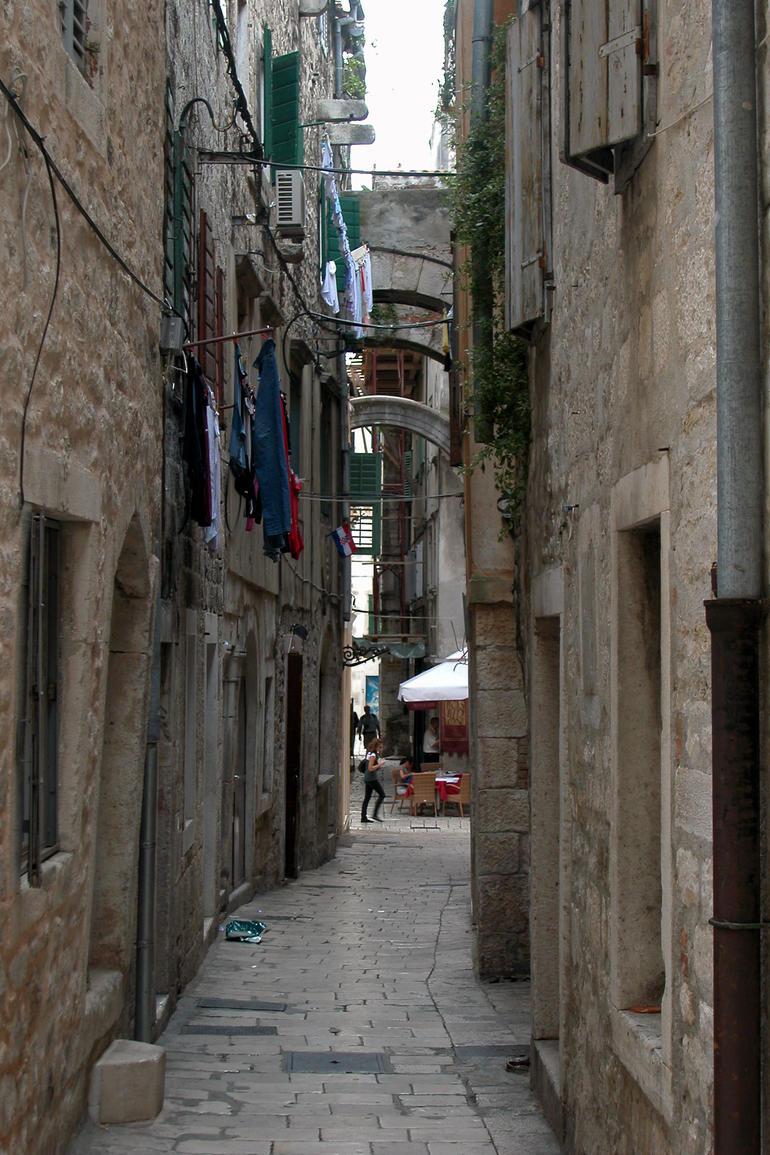
The Jewish community today
A small but very vibrant close-knit community of 100 members remains in Split, coming together several times a year in celebration of their heritage and traditions. The synagogue receives approximately 3,000 visitors each year, ranging from local schoolchildren and residents, to tourists and descendant Jews visiting the city. For the Jewish community, the exhibition is an important record of their long history.
We are delighted to have been able to support both the restoration of Split Synagogue and its new interpretive exhibition through our Jewish Heritage Program, which helps to ensure a future for treasured Jewish heritage sites. We thank The David Berg Foundation, Rothschild Foundation (Hanadiv) Europe, The Cahnman Foundation, Inc., and supporters of our Jewish Heritage Program for making this work possible.
Hundreds of synagogues and other Jewish cultural sites around the world are in danger of disappearing forever, but you can make a difference for these irreplaceable sites with your gift. Learn more and join our efforts today!
Jews in Split may be viewed at the Jewish Community Center in Split as well as online.
